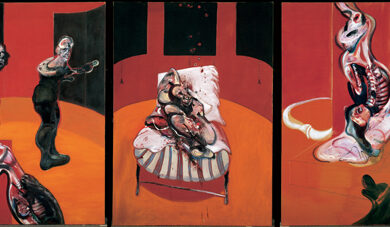Three Studies for a Crucifixion
1962, oil on canvas, each 198.2×144.8
Solomon R. Guggenheim Museum, New York
"If you see someone lying on the pavement in the sunlight, with the blood streaming from him, that is in itself – the colour of the blood against the pavement – is very invigorating . . . exhilarating."
It is perhaps fitting that the most important retrospective of the work of Francis Bacon – the greatest British painter of the 20th Century – opened in the same week as his old watering hole, The Colony Room called last orders for the final time. You probably didn’t have to strain too hard to hear the spectral voice of Muriel Belcher snapping waspishly: "Don’t let the door hit you on the way out, cunty", as the last of the disparate crew of drinkers dispersed into Soho for the last time; descending its creaking wooden stairs past the sign that announced sternly: "This Is Not A Brothel".
The first time I ascended those stairs I nearly got knocked back down again by John Hurt who was being helped on his way by alcohol, gravity and a gentle push from some burly chaps, who shouted after him: "Fuck off!" I was signed in by a journalist friend; even then the membership was on the wrong side of £500 per year. It was a lot of money just to have access to a bar ("Don’t call it a club – they’ll tear your eyes out") not much bigger than the bathroom of your average Wetherspoons dive. The dingy green paint work ("Emerald? EMERALD?! That’s bloody peacock green!") contained a motley bunch of characters; professional ponces, the almost destitute aristocracy, resting poets and actors, artists – all of them entertaining; all of them thirsty. While waiting for a drink I noticed a slightly nicotine enhanced Damien Hirst spot painting propped up behind the optics, gathering ash and other detritus, money knocked off its six figure value with every shot of whisky poured no doubt. (The urbane manager Michael Wojas told me that if the insurance on the art contained in the little space got any more expensive then he’d have to shut up shop for sure – perhaps this is what happened? One thirsty punter Michael Andrews had his slate cleaned in return for painting a mural for the bar known as Muriel’s. It is estimated this piece will fetch around £30,000 when auctioned this month.) It was, they said, the anti-Cheers. A bar where everyone knew your name but called you cunt all the same.
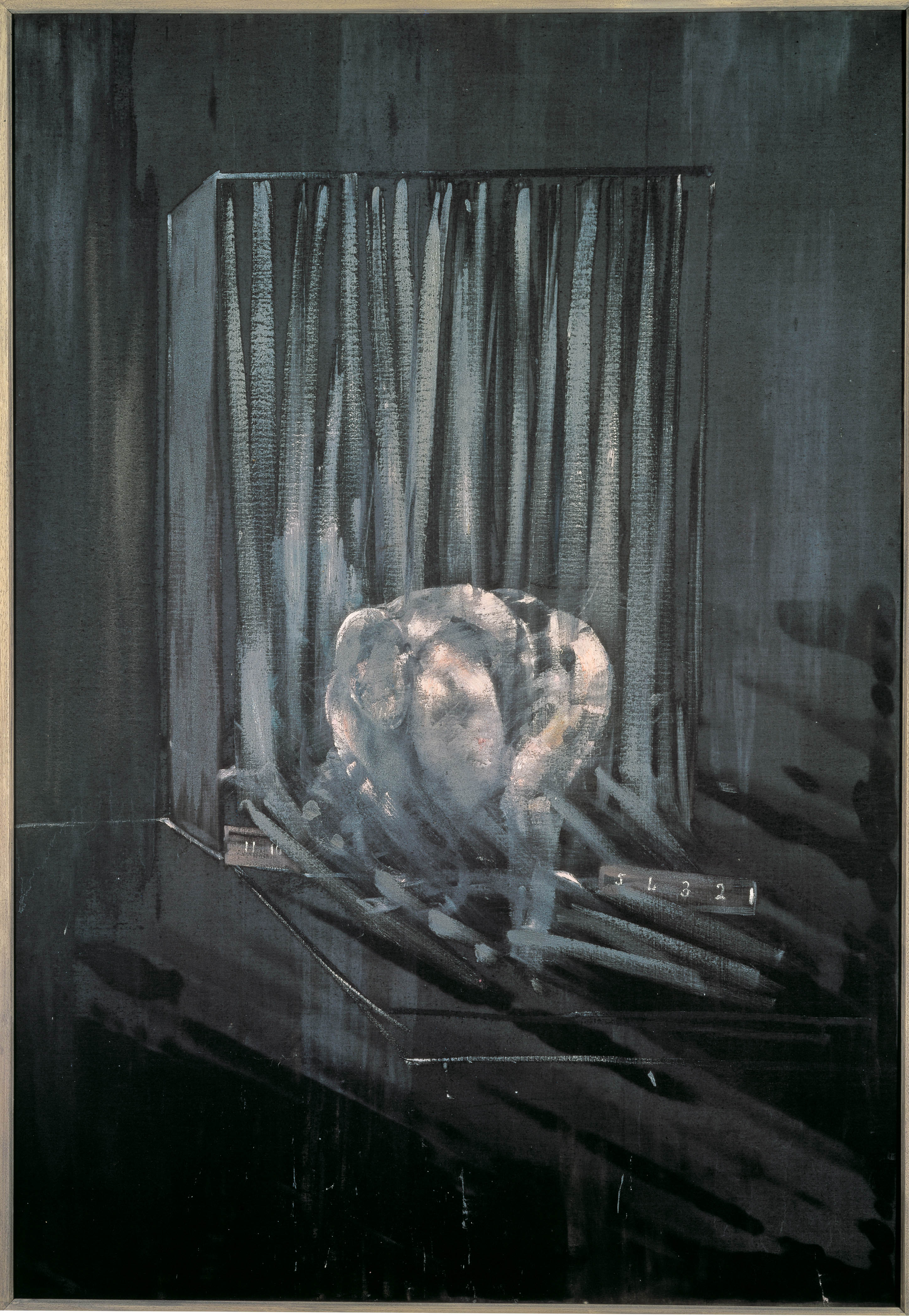
Study for Nude 1951
Collection of Samuel and Ronnie Heyman
© Estate of Francis Bacon. All Rights Reserved, DACS 2007
A good looking woman of indeterminate age spied me and announced: "Darling, there’s something wrong with my tits. Would you give them a squeeze for me please?"
I stuttered for a second before she grabbed my hands and placed them on her chest. "Go on!" she yelled. "Give them a good squeeze." I obliged and she demanded: "Well?"
"They’re fine."
"FINE?!"
"They’re fabulous, I mean."
She brightened, released my hands and said: "Excellent. EXCELLENT! You’d better buy me a gin and tonic then!"
I reeled from punter to punter who in turn reeled me in. I stood at the bar ordering a G&T while some clattered posh guy told me about the ideal shoes to wear for fighting. ("For God’s sake don’t wear sandals or Wellington boots.") What a bunch of freaks. I felt immediately at home.
Later on that evening, the atmosphere of the room changed immediately when the loud and rambunctious crowd became respectful and parted for Francis Bacon’s brother, who had come to visit patrons of the bar.
"In all the motor accidents I’ve seen, people strewn across the road, the first thing you think of is the strange beauty – the vision of it, before you think of trying to do anything. It’s to do with the unusualness of it. I once saw a bad car accident on a large road, and the bodies were strewn about with broken glass from the car, and the blood and various possessions, and it was in fact very beautiful. I think the beauty in it is terribly elusive, but it just happened to be in the disposition of the bodies, the way they lay and the blood, and perhaps it was also because it was not a thing one was used to seeing . . . It was midday, when the sun was very strong and on a white road."
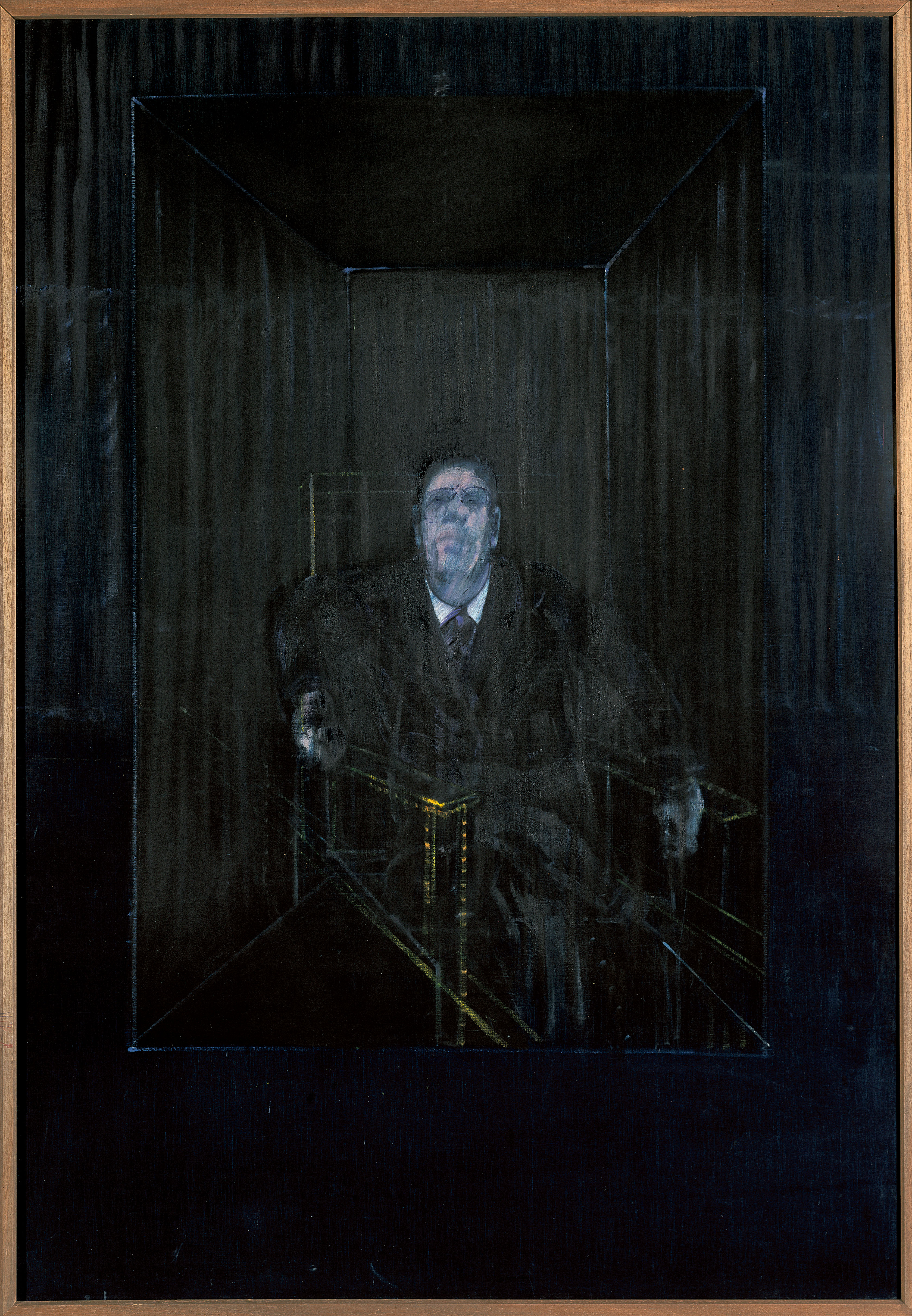
Study for a Portrait 1953
Hess Art Collection, Berne.
© Estate of Francis Bacon. All Rights Reserved, DACS 2007
Francis Bacon was The Colony Room’s first ever regular. It opened its doors in 1949 and he had just had his first one man show and painted ‘Head VI’ the iconic painting of a screaming bishop in a clear box that the Tate have used on their posters for the retrospective. However he was far from established – he also became a tout for Muriel’s that year. He was paid £10 a week and given free drinks, just to hang around in the bar. He at once attracted and repelled the right and wrong sort of people respectively to the afternoon drinking den. The focal point of the painting is the gaping mouth screaming in fear, with the rest of the face obscured by thick, vertical lines of black paint, leaving masses of inverted canvass still bare. It was as if he had taken sandpaper to the vision of the surrealists and the American abstract impressionists who had captured the imagination before the war, scrubbing away at the cinematic visions leaving just bloody and raw reality in place. A religious figure experiencing nihilistic terror predicted a bleak second half of the 20th Century. The paint on the earliest surviving Bacon pieces (exhibited here) was still drying when the Potsdam Agreement was being finalized at the end of World War II but there was no VE Day for the painter. He proceeded immediately from WWII to the cold war as he’d proceeded directly from a strict, middle class Irish Catholic upbringing to a life of brutal masochism in the flesh pots of Soho and Tangiers. From enforced and hypocritical civility to bestial aggression.
The strips of bare canvas acted as a reminder of the reality of what you were looking at. He stripped away at the layers between viewer and painting in other ways as well. Early works showed a fascination with the bared teeth of the baboon, which would scream from the outline of a human bust (‘Head I’ 1947). Man’s brutalizing nature had been exposed permanently by the war; it was impossible to disguise the fact any more. This theme would always be with him. His unsettling picture of Peter Lacy (‘Study For A Portrait’ 1953), mocks us by thrusting our own mortality in our faces; his rictus, skeleton grin, pokes through the flesh of his face. We were animals, there was no pretending any otherwise.
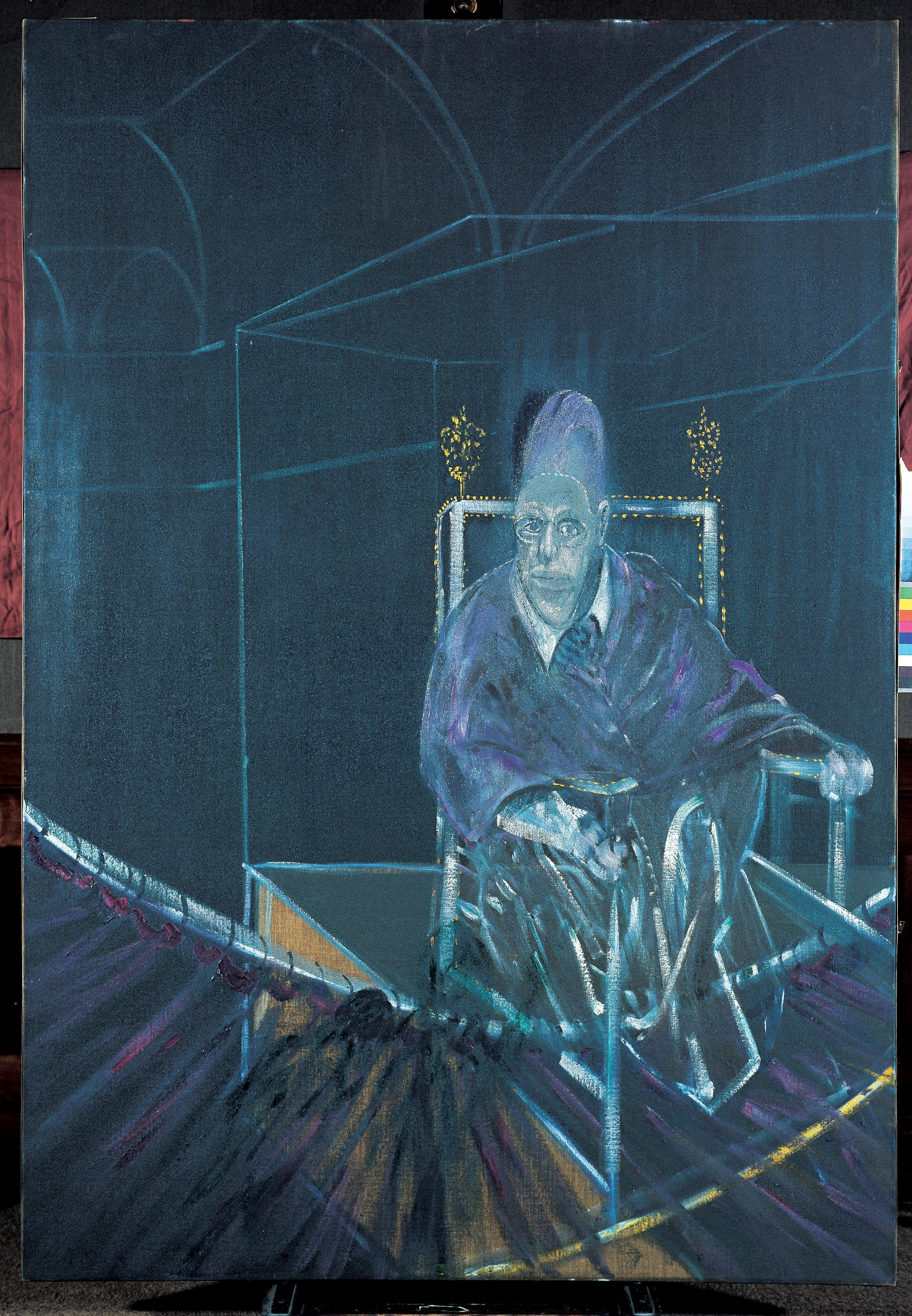
Study after Pope Innocent X by Velazquez 1951
Aberdeen Art Gallery & Museums Collections
© Estate of Francis Bacon. All Rights Reserved, DACS 2007
"Nietzsche forecast our future for us – he was the Cassandra of the nineteenth century – he told us all it’s all so meaningless we might as well be extraordinary."
To Bacon, the body was a cage and he showed it captured and capturing; his subjects were pinned to the canvas as if by a lepidopterist. Arrows, pins, Nazi arm bands, hyperdermic syringes held the wriggling carcasses in place. In the 40s and 50s he favoured implacable vertical stripes of paint that looked like prison bars (it’s widely held that Jonathan Demme based Hannibal Lecter’s perspex cage in Silence Of The Lambs on a Bacon painting). He expanded this further when started portraying subjects inside a ‘space frame’, thin white lines suggesting a translucent cage restricting movement within the painting itself. Through his screaming bishops (such as ‘Study After Velazquez’s Portrait of Pope Innocent X’ 1953) he put religion itself on trial as if it were Adolf Eichman ‘the architect of the Holocaust’ on trial in Israel.
His detractors saw his paintings as an expression of the nihilism and self-loathing of a masochistic and alcoholic homosexual – and such is the power of his vision, some still see him like this. Bacon saw beauty in the horror of our condition though. The sublime pleasure of the here and now replacing supernatural belief and arbitrary morality. While it was true he had a drink problem, he probably wasn’t an alcoholic but rather he liked their company. He spent a lot of his time in places like The Colony it is true but his modus operandi was to buy others drinks, constantly topping up everyone else’s glass and slopping the rest on the floor. He certainly drank less than his lovers, and especially less than George Dyer who was the muse for so many of Bacon’s masterpieces, including the stunning ‘Triptych May – June 1973’ painted after the suicide of the subject in Paris. The panels show him shitting, vomiting and dying, no longer trapped by life. And even here Bacon finds a moving beauty in the indignities of life that very few other painters have ever dealt in let alone captured.
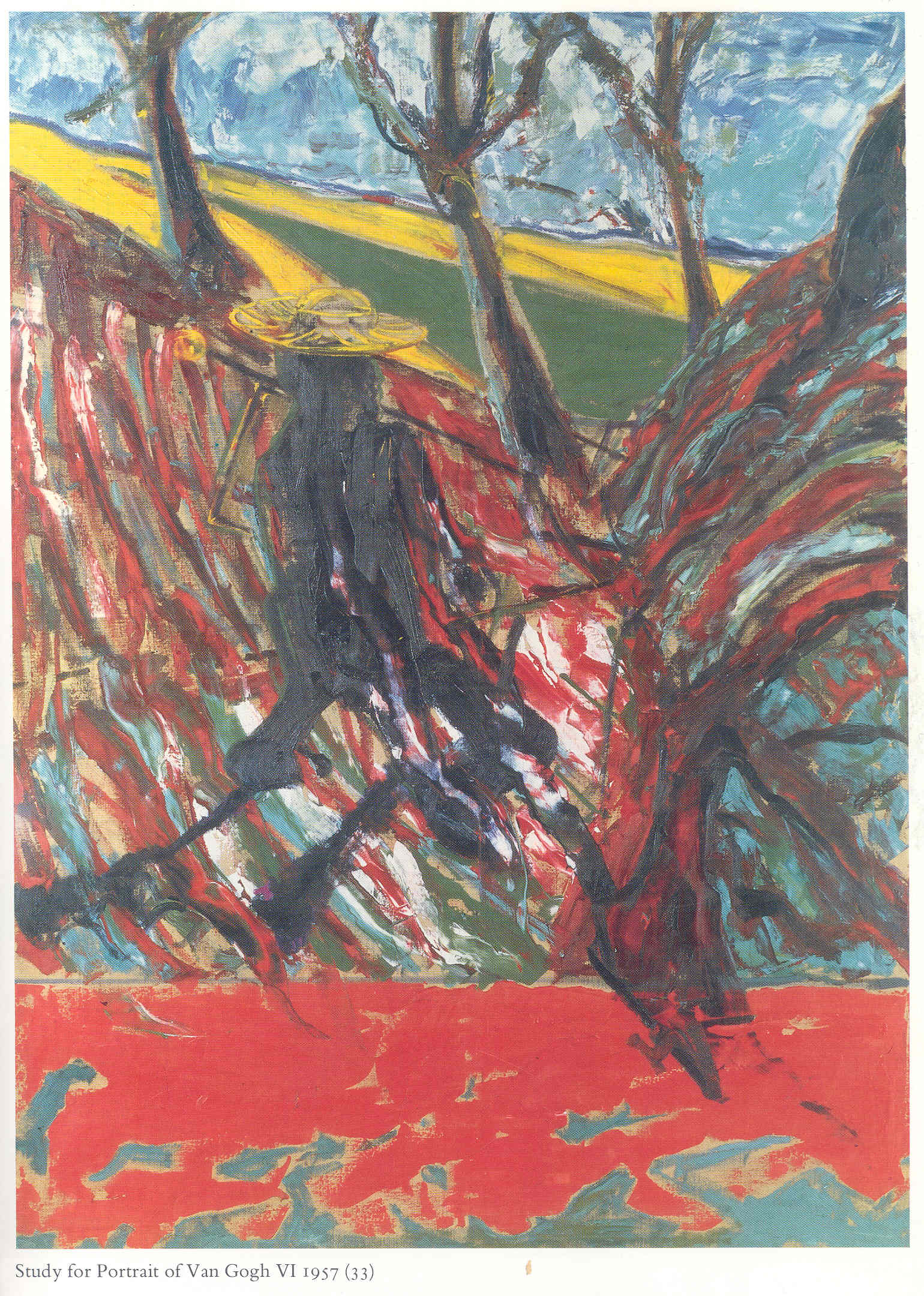
Study for a Portrait of Van Gogh VI 1957
Arts Council Collection, Southbank Centre, London
© Estate of Francis Bacon. All Rights Reserved, DACS 2007
Francis Bacon Tate Britain
11 September 2008 – 4 January 2009
Sponsored by Bank of America


